Fashion Brands That Support Traditional Crafts
10 Designers On Handcraft Revival And Beingness #VocalForLocal
Leading designers walking the states through their process of handcraft revival, and how going local has helped their brand find its niche.
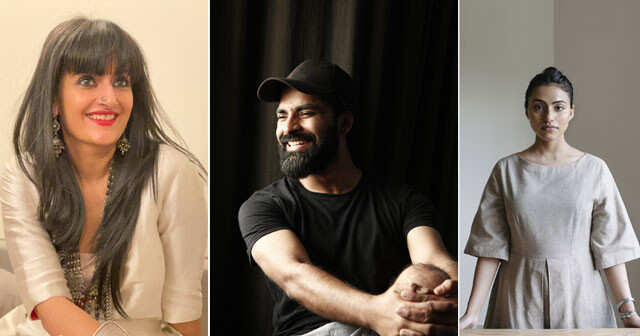
Antar-Agni (Ujjawal Dubey)
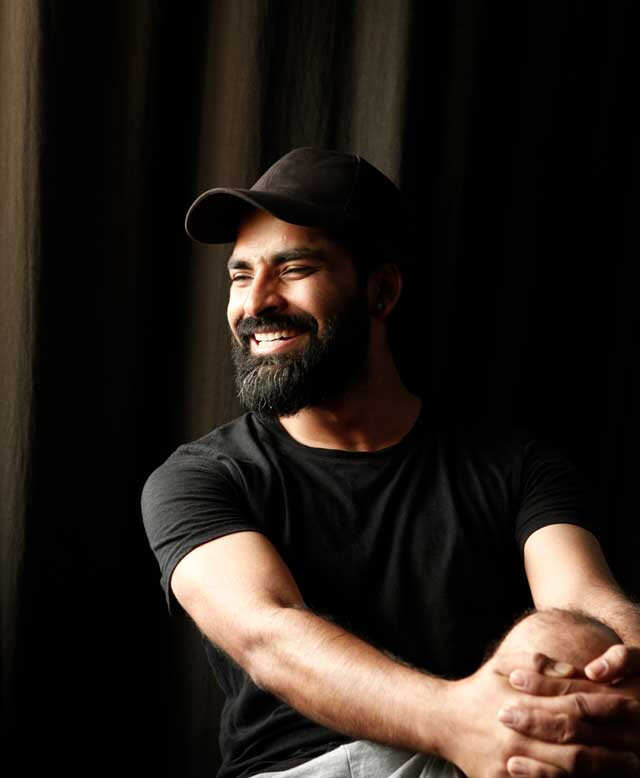
"We at Antar-Agni use handlooms not just because the textile is handwoven, only as well because we beloved the characteristic of the outcome. The idea is non to put a fabric in a box and create only a certain type of garments with it. We beloved making tailored jackets of handspun fabrics since it offers an interesting juxtaposition of the silhouette and textile. We, as a country, should also wait forward to the thought of using 'handmade', thus converting our population into our force."
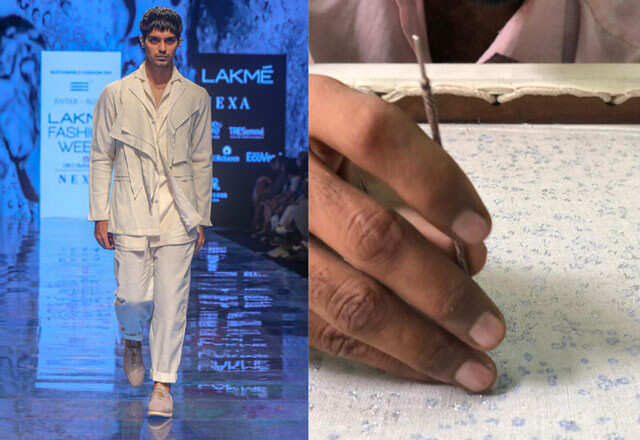
Rahul Mishra
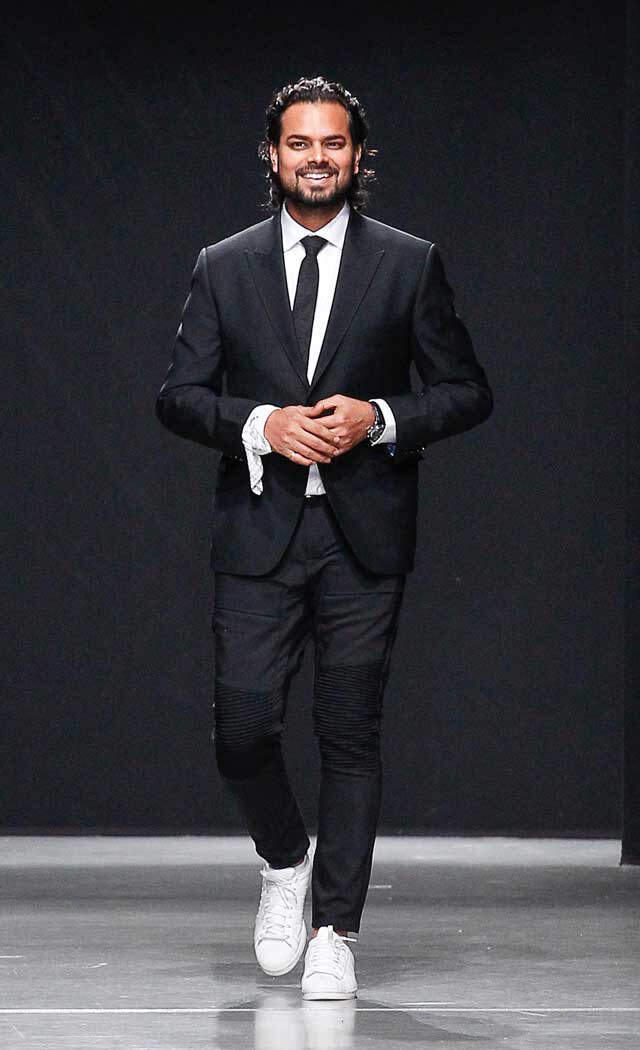
"Taking the Indian rural order and numerous local craft-based communities into account, we hope to support the system as a whole past creating more employment opportunities and inclusivity. Upon identifying the desired arts and crafts, we deconstruct it and with suitable design intervention, redefine its awarding in our wearing apparel while keeping its integrity and individual characteristics intact. If the craft has to sustain, information technology must evolve with fourth dimension, and, equally a designer, it is my responsibility to facilitate that transition in my best capacity."

Anavila(Anavila Misra)
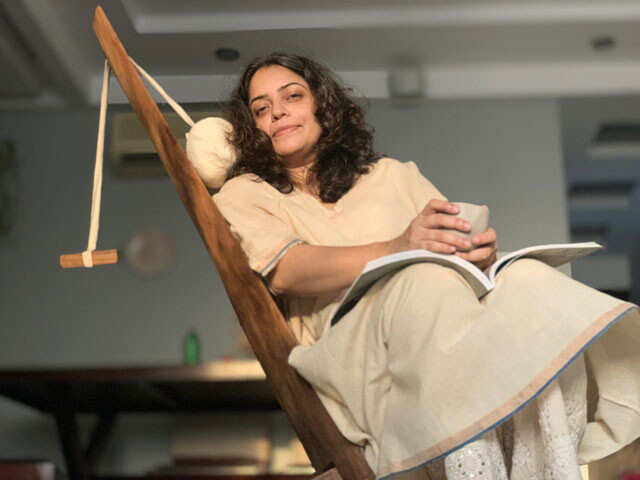
"The Phulia region of West Bengal has been known for its cotton tant saris and fine work with khadi and muslin. When we started working with artisans at that place nine years ago with the new linen yarn, the collaboration created a design disruption in the sari space. Our work with this cluster has always been collaborative, nosotros visit the cluster with an thought of the textiles we want to work with, and everything is discussed with the weavers. Based on the possibilities and challenges of the loom, sampling is done initially, and eventually, product is planned. One time the designs are finalised information technology'south easy for united states to coordinate through long-distance. The connected work in one region has helped the brand create a unique pattern identity, along with a sense of community with the weavers."
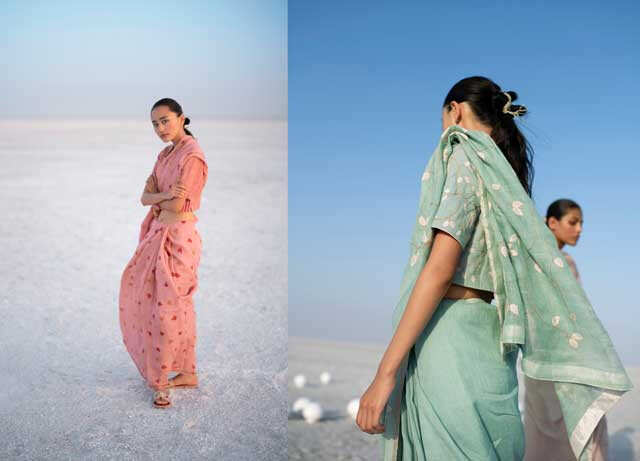
Ekaya (Palak Shah)
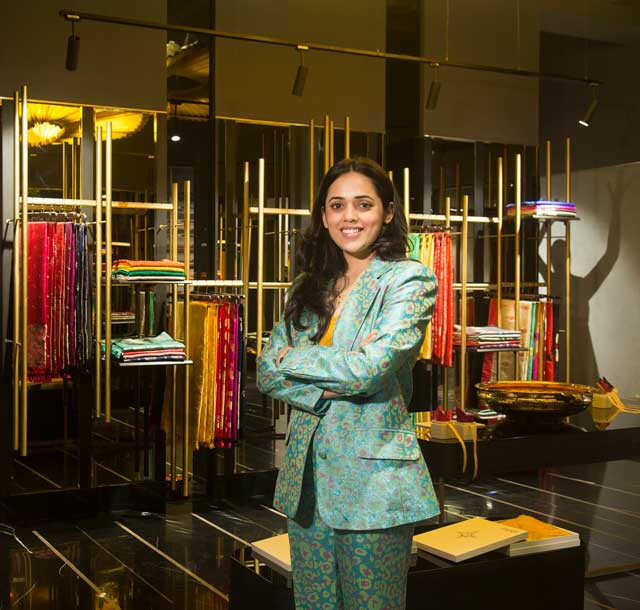
"Ekaya believes in the timelessness of handcrafted textiles. Change is indeed the just constant. Simply when information technology comes to modernising a handcrafted textile, this change presents itself in the diversity of presentation and carriage, not in the inherent character. For case, a traditional bridal A-line lehenga to match with a choli, and a gathered A-line brim to match with a airship-sleeved blouse may be fashioned out of the same textile. The final looks maybe different. But both volition appeal to the modern wearer equally versatile heritage investments for the nowadays and the hereafter."
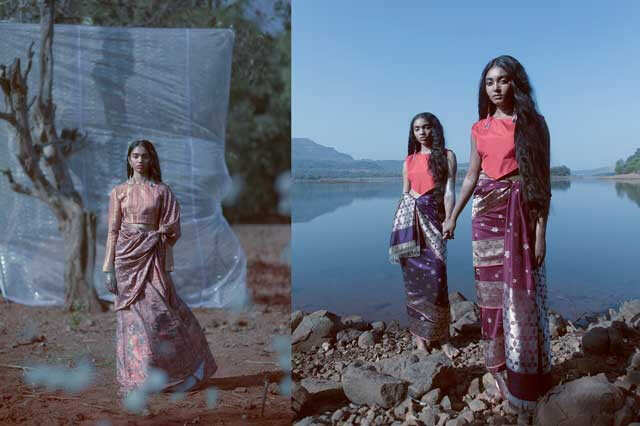
Payal Khandwala
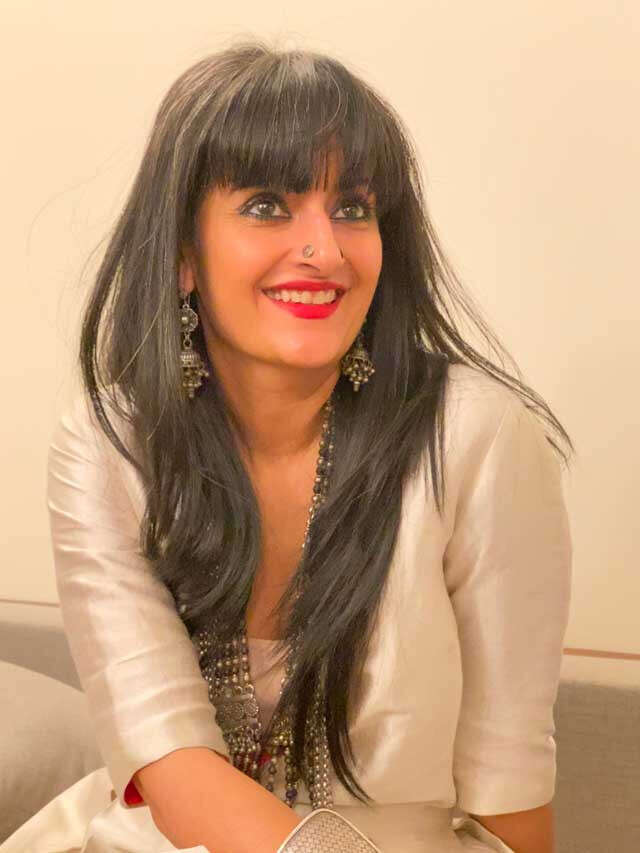
"To this terminate, we develop handloom silks in our signature color-blocked palette, merely in textiles that drape and feel a sure mode. We develop them with wool, cotton fiber and linen because unlike weighted fabrics work on different silhouettes. With our brocades, we piece of work with traditional motifs as well every bit contemporary patterns that we develop in-house. Merely what differentiates our clothing is the way that we rethink traditional brocades. We brand our distinct modernistic silhouettes in this textile, jumpsuits, maxis, dresses, skirts in improver to shapes that we typically associate with Benarasi brocades, so that we non only redefine the context and make them a fleck unpredictable but likewise make them more relevant. The challenge that excites me e'er is how do nosotros retain the essence of our traditional craft, but costless information technology from its obvious cultural trappings?"
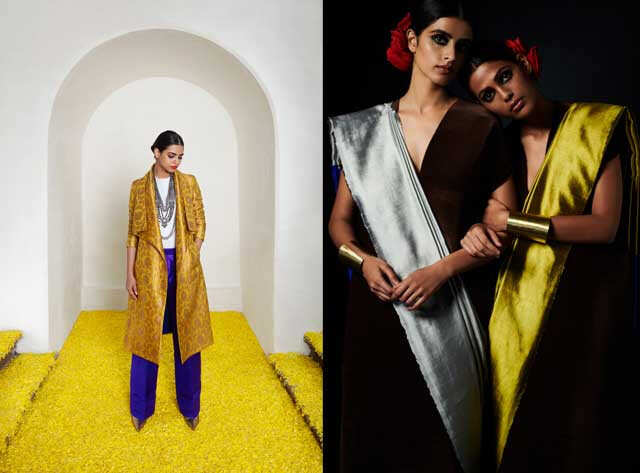
Ritu Kumar
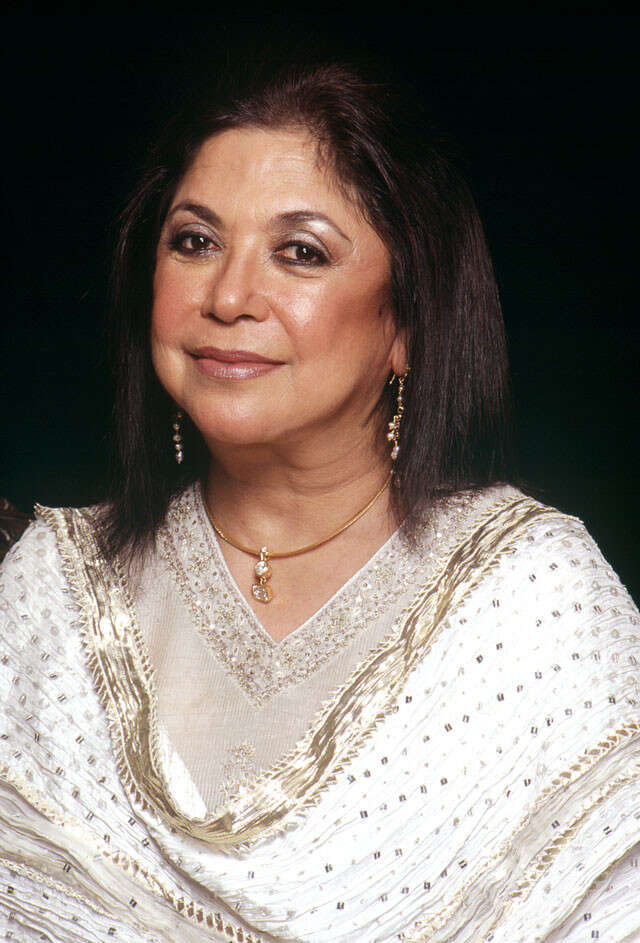
"For over 40 years, my team and I take steeped in research and academia, and worked with craftsmen from across the country, evolving various fine art forms to suit the needs of the irresolute Indian adult female. Our designs translate rich Indian heritage with make clean lines and edgy silhouettes that cater to the current way trends. With the COVID-19 crisis, introspection will perhaps exist needed to air current back a decade or and so. We will exist looking at returning to classics and conventional designs that stand up the test of time."
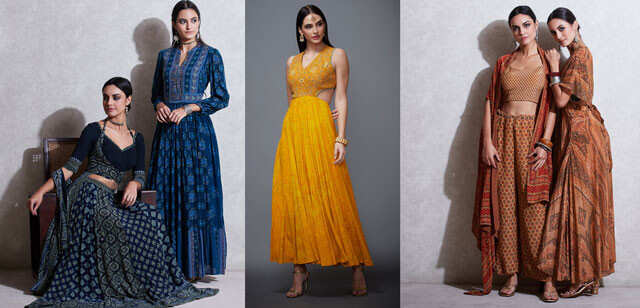
Bodice (Ruchika Sachdeva)
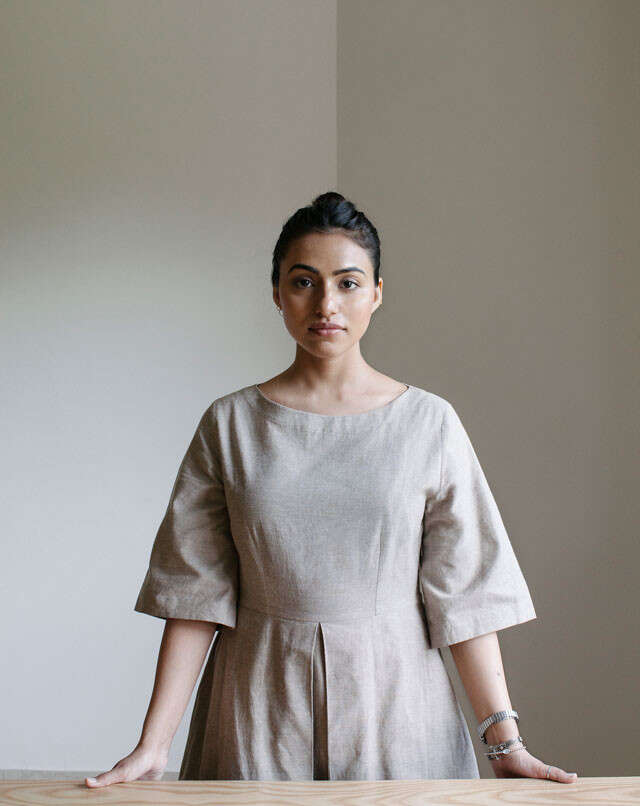
"Bodice, every bit a brand, has always leaned towards exploring traditional techniques which originated in India. Blending traditional techniques with contemporary designs aligns with Bodice's design philosophy. Kantha is 1 such technique which is often used in our designs. Kantha's running sew together forms a micro symmetry within the apparel which helps build an illusion of linear blueprint. We incorporated this technique considering it isn't usually used and it could be explored further."
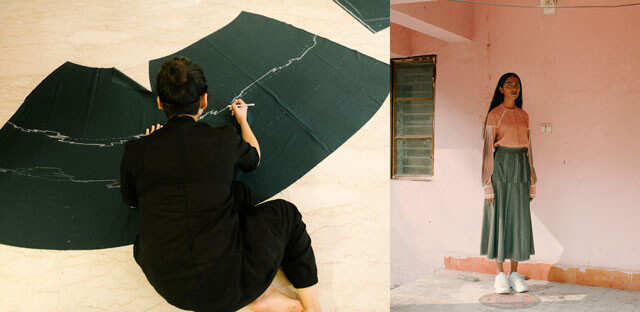
Anjul Bhandari

"Our focus has always been to preserve the craft of chikankari and mukaish for over a decade now. The craft is timeless and hence our garments are classic, heirloom ensembles which will always make a argument irrespective of the current trend. Over the years, we have moved from cotton to embroidering chikankari on georgettes, chiffons, muslins, pashmina and organza. In order to lend a gimmicky feel, we add our signature highlights like infant mirrors, Japanese baby pearls and sequins to our ensembles to brand them more festive. Final year, nosotros acquired the know-how to dye our Japanese baby pearls to pastel shades that add more colour to the base shade of the cloth and the white thread embroidery. In 2020, we are also using zardozi, another craft from Awadh to highlight our chikankari, which makes information technology more than apt for festive and wedding occasions."
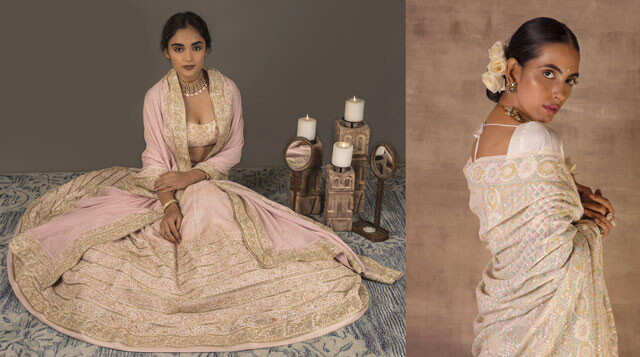
Péro (Aneeth Arora)
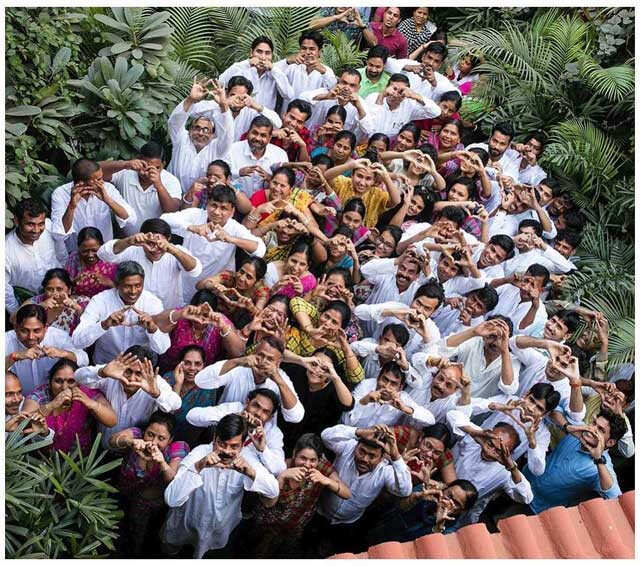
"The Indian-ness of péro rests in the textile process, where materials pass through many craftspersons, and come together to make a unique piece. In last ten years, the make has worked in shut collaboration with over a 1000 weavers/craftspeople across diverse regions in the land, including Gujarat, Rajasthan, West Bengal, Karnataka, Andhra Pradesh, Kerala, Orissa, and Madhya Pradesh among others to innovate handwoven, dyed and printed textiles. Every season (twice a year) péro develops about l varied textiles with at least v different regions in India, involving at least 500 weavers across the country and the clan continues irrespective of changing fashion trends and seasons."
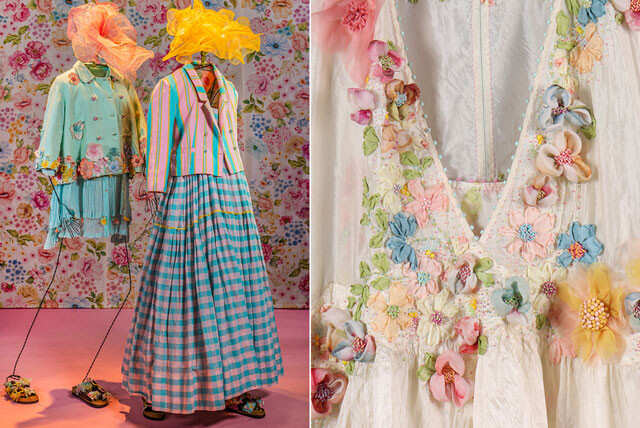
Raw Mango (Sanjay Garg)
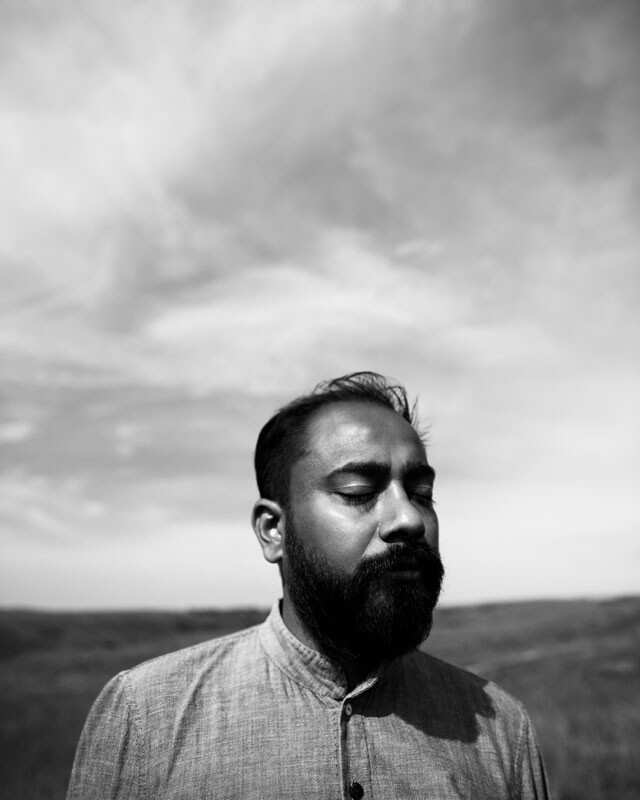
"Both tradition and modernity are subjective and it is important to continue evolving and innovating. At Raw Mango, we think of the time to come—whether that is through technique, material or colour. At the same time, nosotros recognise tradition in our designs by constantly questioning the context in which it is spoken of."
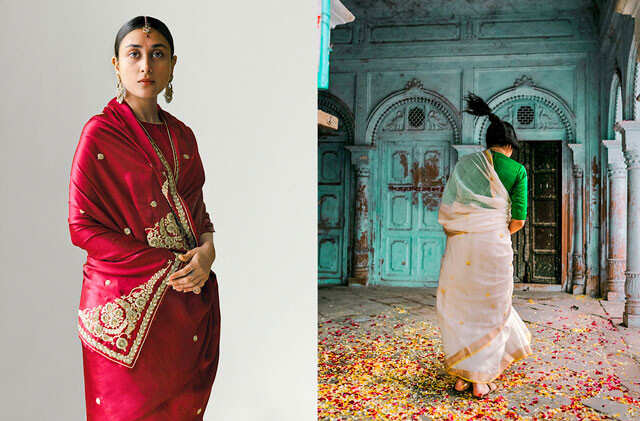
All photos used with prior permission
Too Read: Sabyasachi On His roots, Becoming A Conglomerate And His Purist Aesthetic
Subscribe to our YouTube channel
Next Story
 Loading...
Loading...
0 Response to "Fashion Brands That Support Traditional Crafts"
Post a Comment